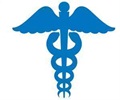- What is Behcet’s Syndrome? - (https://rarediseases.org/rare-diseases/behcets-syndrome/)
- Behcet's Disease - (https://medlineplus.gov/behcetssyndrome.html)
- About Behcet's disease - (https://www.ncbi.nlm.nih.gov/pmc/articles/pmc165051/)
What is Behcet’s Syndrome?
Behcet's syndrome is a rare inflammatory disorder that affects the blood vessels of the human body. Inflammation of the blood vessels is also known as vasculitis. As the blood vessels are affected in this condition, it can result in a multisystem disorder that affects the skin, joints, nervous system and the digestive tract.
This condition is more commonly seen among people residing in the Middle East and Asia, with a higher prevalence in countries following the Silk Road from the Mediterranean region to Japan. Turkey has the highest prevalence of this disease and in Japan it is considered as one of the most important causes of blindness.
The diagnosis is often difficult as the symptoms take time for occurrence and may resolve to reappear years later.
What are the Causes and Risk Factors of Behcet’s Syndrome?
The cause for this condition is presently under study and evidence suggests a significant association of the disease with HLA-B51 gene that is seen in certain ethnic groups.
Auto immune causes that have been previously suggested could not be confirmed due to lack of evidence of auto immune bodies at the time of disease.
Individuals between 20 to 40 years of age are most commonly affected. It is seen more among men with severe forms. In the United States this condition is rare and if seen, it is observed in a less severe form among women.
What are the Symptoms and Signs of Behcet’s Syndrome?
The earliest symptoms that are seen in Behcet’s syndrome include:
- Aphthous stomatitis: These are painful sores seen in the mucous membranes within the mouth; they are also called canker sores. They heal within a few days but may recur later. The sores surface for many years before the onset of other symptoms. Recurrence of larger and deeper sores may be seen in the genital areas.
- Small pus filled growths may be seen on the skin; it may appear as round inflammatory nodules on the legs or pus filled lesions on the hair follicles that leave scars.
- More than half of the patients complain of pain in the joints or arthralgia and it might often include multiple joints; the pain is chronic in nature.
- Repeat occurrence of ulcers may be seen in the digestive system especially stomach and intestine resulting in abdominal pain, diarrhea, and bleeding.

What are the Clinical Manifestations of Behcet’s Syndrome?
Behcet’s disease is further classified into 3 types based on clinical manifestations, namely:
- Ocular-Behcet’s syndrome
- Neuro-Behcet’s syndrome
- Vasculo-Behcet’s syndrome
Ocular Behcet’s Syndrome is seen when the condition affects the eyes; there is inflammation either in the posterior part of the eye called posterior uveitis or the anterior chamber of the eye called anterior uveitis. Other symptoms include:
- Lacrimation - tearing
- Photophobia - discomfort of the eyes on light exposure
- Chorioretinitis - inflammation of the choroid and retina
The inflammation may resolve but recurrence without treatment can result in decrease of visual activity and later result in complete blindness.
Vascular Behcet’s Syndrome is characterized by the involvement of small blood vessels (both veins and arteries) with veins being more commonly affected (7-33% chance). Venous involvement consists of venous thrombosis due to inflammation of the large veins in the legs. Arterial involvement consists of bulging of the walls forming aneurysms. The blood clots from the veins might travel to the lungs causing a pulmonary embolus whose symptoms include chest pain, difficulty in breathing, and coughing out blood.
Neuro Behcet’s Syndrome is seen in 10-20% of the patients and is caused due to any primary lesion in the nervous tissue or it may occur secondary to a major vessel involvement. The most commonly affected organs of the nervous system include brainstem, cerebral hemispheres, and spinal cord. It is classified into two types based on the onset of the disease:
- Acute Neuro Behcet’s syndrome is characterized by non focal lesions affecting the brain that is self limiting.
- Repeated attack of the acute condition can further progress into chronic progressive Behcet’s syndrome. This is characterized by loss of memory, loss in coordination of movement and difficulty in speech.

How do you Diagnose Behcet’s Syndrome?
There are no specific diagnostic criteria for this condition and the diagnosis largely depends on the judgment of the physician. Certain criteria have been developed for clinical studies and help in decision making; these include:
- Recurrent oral ulceration that occur along with eye lesions, skin lesions or genital ulceration.
- A positive pathergy test: This test consists of the physician pricking the individual with a sterile needle; a positive outcome is observed when a reddish nodule forms after 48 hours.
What are the Treatment Modalities for Behcet’s Syndrome?
The treatment is directed towards the specific symptoms of the patient and prevention of further attacks. The treatment modality depends on the severity of the condition, age and sex of the patient. Often spontaneous recovery is seen in patients with Behcet’s syndrome.
- Applications of corticosteroid treatment for recurrent ulcerations have been indicated for temporary relief and to prevent further ulcerations.
- Mouthwashes with local anesthetic and use of painkillers like non steroidal anti-inflammatory drugs help in pain relief.
- Corticosteroids are also used in the form of eye drops to reduce inflammation; they are also used during involvement of the nervous tissue with other immunosuppressive agents.
- Immunosuppressive agents like Azathioprine, Chlorambucil help in reducing inflammation and protection of the organ.
What is the Prognosis for Behcet’s Disease?
With effective treatment, symptoms can be controlled and complications can be prevented in most people with patients showing a disappearance of symptoms. However, in some people, treatment does not relieve symptoms, and gradually more serious symptoms (such as eye disease) may appear several months or years after the first signs of Behçet’s disease.
Drugs used for symptomatic treatment of the condition include:
Colchicine is a widely used drug for the treatment of Behcet’s disease. Clinical studies have revealed an improvement in the occurrence of arthritis among the individuals suffering from Behcet’s syndrome, but it is unable to treat the severe manifestations of this condition. Continuous treatment helps in preventing further attacks.

Cyclosporine A is another drug that has been used, particularly aiming towards the severe manifestations of the condition, but neurotoxicity of the drug may result in Acute Neuro Behcet’s syndrome.
Methotrexate is a drug that has shown improvement in patients suffering from Chronic Progressive Neuro Behcet’s syndrome. It has also shown to improve the ocular manifestations in Behcet’s syndrome.
Infliximab is a monoclonal antibody that is found to produce effective suppression of inflammation in ocular conditions and helps in treatment of oro-genital ulcerations, gastrointestinal and skin lesions.









